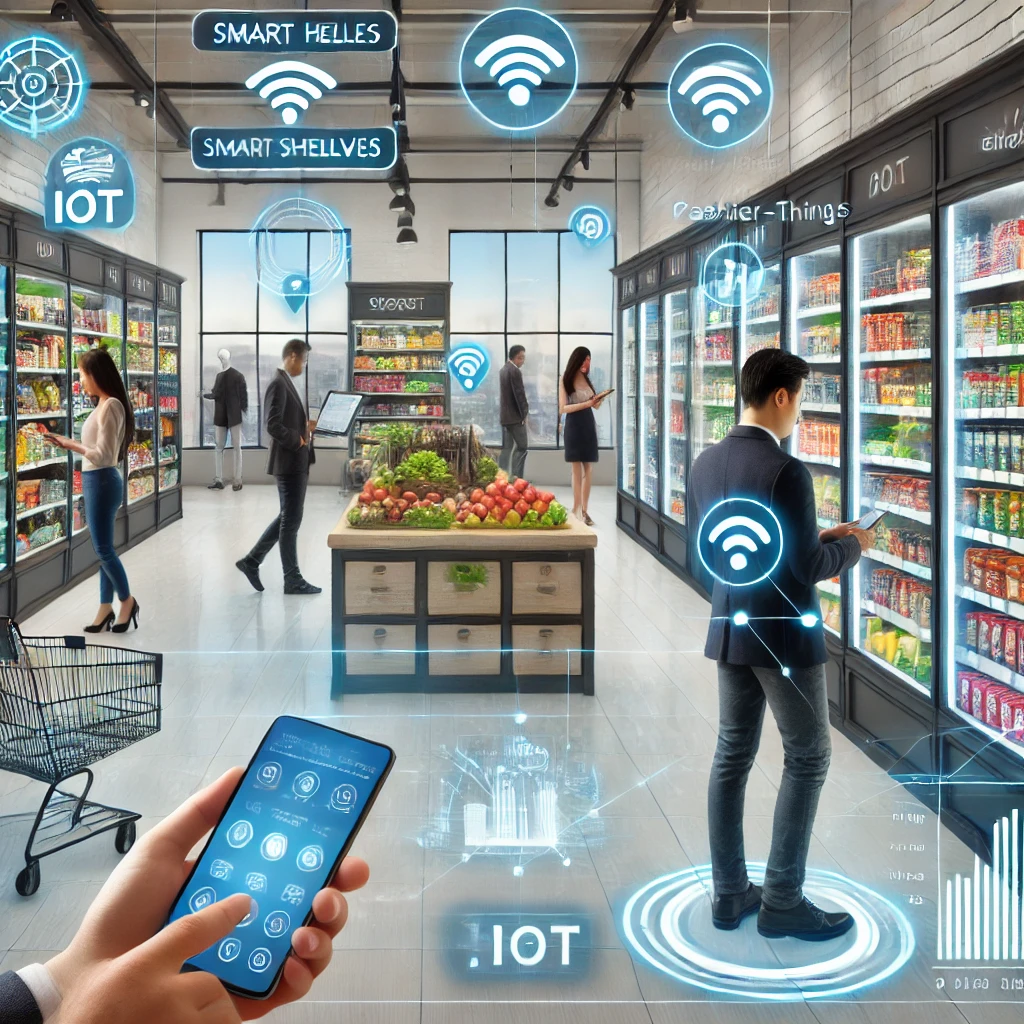
Introduction
The retail landscape is undergoing a transformative shift. With the advent of the Internet of Things (IoT), retailers are embracing innovative ways to enhance customer experiences. This article explores The Rise of IoT in Retail, its applications, and how it redefines customer engagement.
1. Understanding IoT in Retail
IoT, or the Internet of Things, refers to interconnected devices that collect and exchange data. In retail, these devices streamline operations and improve customer satisfaction. From inventory tracking to personalized shopping experiences, IoT technology is a game-changer.
1.1 What Makes IoT Essential for Retail?
IoT provides real-time data, which helps retailers make informed decisions. The seamless communication between devices ensures efficiency and accuracy in daily operations. This innovation is pivotal in meeting customer expectations in today’s competitive market.
1.2 The Role of Data in IoT Integration
Data is the backbone of IoT. Sensors and smart devices collect vast amounts of information, which retailers analyze to improve services. This process ensures that decisions are tailored to customer needs.
2. Key Applications of IoT in Retail
IoT is revolutionizing retail with its diverse applications. These technologies enhance efficiency and create a more engaging shopping experience.
2.1 Smart Shelves for Real-Time Inventory Management
Smart shelves use sensors to monitor stock levels. When items run low, they automatically notify the system. This reduces the chances of stockouts and ensures a smooth shopping experience.
2.2 Personalized Customer Experiences
IoT devices gather data on customer preferences, enabling personalized recommendations. For instance, smart mirrors in fitting rooms allow shoppers to virtually try on clothes, enhancing their overall experience.
2.3 Connected Payment Systems
IoT-enabled payment systems, such as contactless payments, speed up the checkout process. These systems not only save time but also provide a secure transaction method, boosting customer confidence.
2.4 In-Store Navigation with Beacons
Beacons are small devices that send targeted messages to customers’ smartphones. They guide shoppers through the store, suggesting products based on their preferences and enhancing the in-store experience.
3. Enhancing Customer Experiences with IoT
The Rise of IoT in Retail is largely driven by its ability to enhance customer experiences. Retailers are leveraging IoT to provide convenience, personalization, and engagement.
3.1 Seamless Omnichannel Experiences
IoT bridges the gap between online and offline shopping. For example, customers can check product availability online and pick up items in-store, creating a unified shopping journey.
3.2 Predictive Maintenance for Smooth Operations
Smart devices predict when equipment might fail, ensuring uninterrupted service. This reliability builds customer trust and improves satisfaction.
3.3 Instant Feedback Mechanisms
IoT devices collect immediate feedback from customers. Retailers use this data to address issues quickly, improving overall service quality.
4. Benefits of IoT for Retailers
While customers benefit from improved experiences, IoT also provides numerous advantages for retailers.
4.1 Cost Efficiency
IoT optimizes operations, reducing labor and energy costs. Automated systems eliminate human error, ensuring better resource utilization.
4.2 Enhanced Security
IoT-enabled security systems monitor stores in real-time. They detect unusual activities and notify authorities instantly, protecting both customers and inventory.
4.3 Better Decision-Making
Real-time analytics allow retailers to make data-driven decisions. From understanding customer behavior to optimizing inventory, IoT provides actionable insights.
5. Challenges in Implementing IoT in Retail
Despite its benefits, implementing IoT comes with challenges. Retailers must address these issues to fully realize its potential.
5.1 High Initial Costs
IoT technology requires significant investment. Small and medium retailers may find it challenging to adopt these innovations due to budget constraints.
5.2 Data Privacy Concerns
With IoT collecting vast amounts of data, privacy becomes a concern. Retailers must ensure compliance with data protection regulations to maintain customer trust.
5.3 Integration Complexities
Integrating IoT with existing systems can be complex. Retailers need technical expertise and robust infrastructure to implement these solutions effectively.
6. Future Trends in IoT for Retail
As technology evolves, so does its application in retail. The Rise of IoT in Retail continues to shape the industry, bringing forth exciting trends.
6.1 AI-Powered IoT Devices
Artificial intelligence combined with IoT will enable smarter devices. These advancements will provide even more personalized and efficient customer experiences.
6.2 Augmented Reality in Shopping
IoT-enabled augmented reality (AR) is set to revolutionize shopping. Customers can visualize products in their homes before purchasing, bridging the gap between online and physical stores.
6.3 Sustainability through IoT
IoT can help retailers adopt sustainable practices. For instance, smart energy systems reduce electricity consumption, contributing to environmental conservation.
7. The Global Impact of IoT in Retail
IoT is not limited to developed markets; it is transforming retail globally. From urban centers to rural areas, its impact is undeniable.
7.1 IoT Adoption in Emerging Markets
Emerging markets are leveraging IoT to modernize retail infrastructure. These advancements make shopping more accessible and efficient for a broader audience.
7.2 Cross-Border Collaboration
IoT facilitates collaboration among international retailers. This interconnectedness enables global supply chain optimization and better customer service.
8. How Retailers Can Embrace IoT Successfully
To benefit from IoT, retailers must adopt a strategic approach. Here’s how they can do it:
8.1 Start Small and Scale Gradually
Retailers should begin with small IoT implementations and scale up as they see success. This approach minimizes risk and allows for gradual adaptation.
8.2 Partner with Technology Providers
Collaboration with IoT experts ensures smooth integration and efficient operations. Retailers can leverage their expertise to avoid common pitfalls.
8.3 Focus on Employee Training
Training employees to use IoT devices is essential. A knowledgeable workforce ensures that the technology is utilized to its full potential.
9. Conclusion
The Rise of IoT in Retail is transforming the industry, creating opportunities to enhance customer experiences and streamline operations. Despite challenges, its benefits far outweigh the drawbacks, making it a valuable investment for the future of retail. As technology advances, retailers must stay ahead by embracing IoT strategically. By doing so, they can meet customer expectations, drive growth, and redefine the shopping experience.
READ MORE :
- https://rmm.abyadi.com/the-intersection-of-ai-and-iot/
- https://rmm.abyadi.com/iot-in-education/
- https://rmm.abyadi.com/the-economic-impact-of-iot/